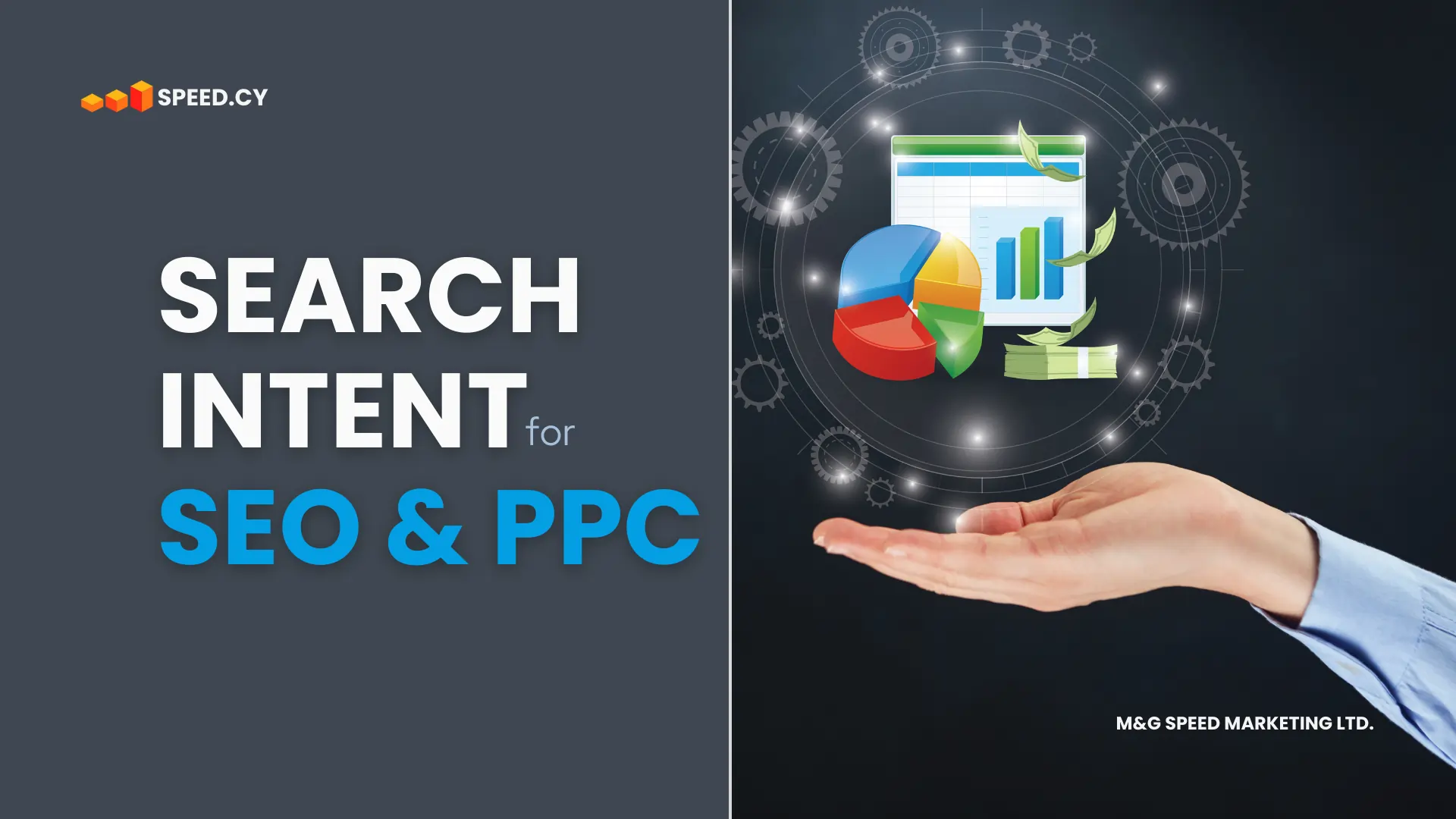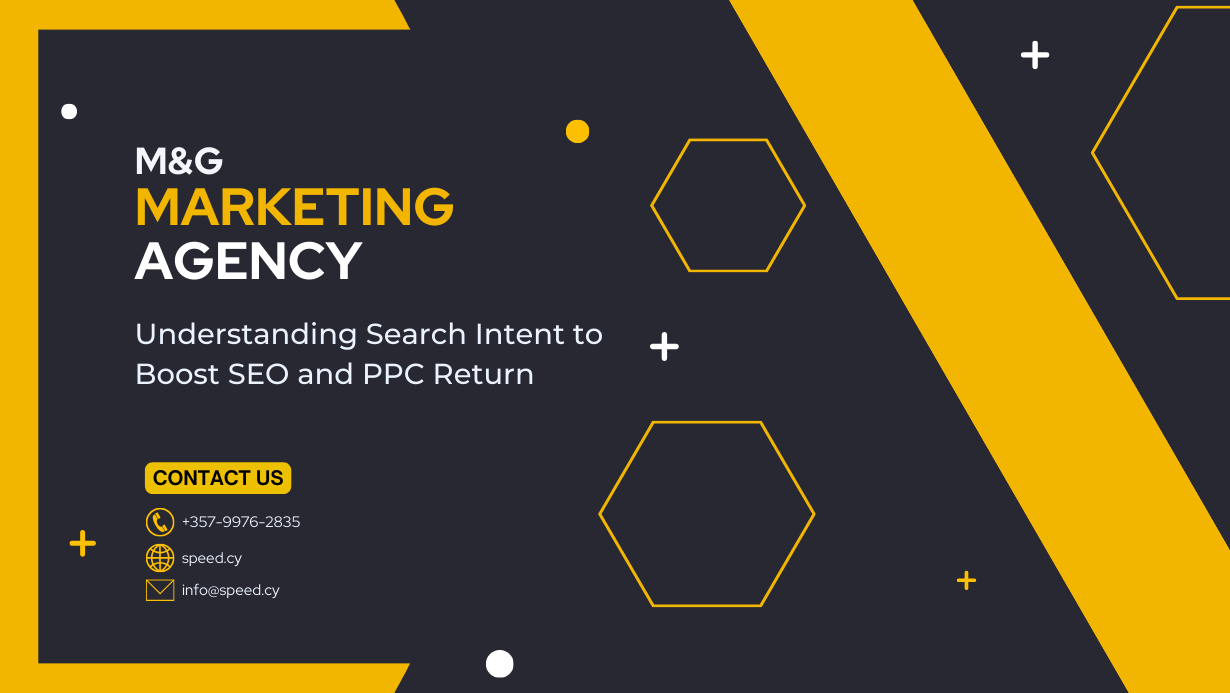Search intent refers to the underlying purpose behind a user’s search query. It encompasses the motivation, goals, and reasons that drive people to type specific keywords into Google or other search engines.
Grasping search intent allows you to align your SEO and PPC strategies with what users are actually looking for. This results in higher clickthrough rates, lower bounce rates, increased time on site, and ultimately better search engine rankings and conversion rates.
In this comprehensive guide, we’ll cover:
- What is search intent and why does it matter?
- The 4 main types of search intent
- How to leverage search intent for improved SEO
- How to leverage search intent for better PPC performance
- Tips for mastering search intent analysis
- Real-world examples of search intent in action
Properly optimizing for search intent is crucial for companies who want to connect with customers during their online research and decision making journey. Let’s dive in!
What is Search Intent?
Search intent refers to the motivation and purpose behind a search query. It seeks to answer the question – why did the user search for this particular keyword or phrase?
There are a few key things to know about search intent:
- It goes beyond the literal query to uncover the user’s underlying need or desire.
- It aims to categorize searches based on the goal of the user.
- There are different categories of intent, which we’ll explore next.
- Matching your content to the search intent increases relevance, engagement, and conversions.
Why Does Understanding Search Intent Matter?
Analyzing search intent allows you to create content and campaigns tailored to what users are actually looking for. This results in:
- Higher clickthrough rates: Your titles, meta descriptions, and ad copy will resonate more if they align with search intent.
- Lower bounce rates: Users who find what they want quickly are more likely to stay on your site and consume more content.
- Improved conversions: Users further down the funnel are more likely to convert if you guide them properly at each stage.
- Better user experience: Addressing the underlying questions and concerns behind a query improves satisfaction.
- Higher search rankings: Google wants to surface content that comprehensively satisfies user intent.
In short, optimizing for search intent leads to a positive experience for searchers and better performance for your business.

The 4 Main Types of Search Intent
Search queries can be divided into four primary categories based on the intent of the user:
1. Navigational Intent
The searcher wants to visit a specific website or webpage that they already have in mind.
Examples:
- brand names e.g. “amazon”
- specific companies e.g. “walmart”
- unique named entities e.g. “empire state building”
2. Informational Intent
The searcher wants to find information about a topic in order to learn more. There is no immediate intention to take action.
Examples:
- broad queries e.g. “keto diet”
- questions e.g. “how long do cats live?”
- research terms e.g. “best practices for email marketing”
3. Commercial Intent
The searcher is looking for a product or service to purchase. They are open to discovering new brands/options.
Examples:
- product searches e.g. “mountain bikes”
- comparison terms e.g. “honda civic vs toyota corolla”
- best/top lists e.g. “best restaurants in NYC”
4. Transactional Intent
The searcher has already decided what they want to buy and is ready to complete the purchase.
Examples:
- specific product searches e.g. “vitamix 5200 blender”
- seeking deals e.g. “nordictrack treadmill sale”
- business names e.g. “target store hours”
Leveraging Search Intent for Improved SEO

Optimizing your content for search intent helps search engines understand your pages’ relevance for different queries. Here are some key ways to leverage intent for better SEO:
Conduct Thorough Keyword Research
- Analyze search volume and difficulty for potential target keywords using tools like Google’s Keyword Planner.
- Group keywords by intent – informational, commercial, navigational.
- Identify questions and long-tail keyword opportunities.
- Avoid targeting high volume but vague keywords like “shoes”. Analyze the actual intent behind searches for footwear.
Create Intent-Optimized Content
- For informational keywords, provide comprehensive guides, comparisons, and tutorials.
- For commercial keywords, include product recommendations, reviews, and best lists.
- For navigational keywords, ensure your company name, branded terms, and contact info are easy to find.
- For transactional keywords, make sure product details and purchase options are clear.
- Format content for easy skimming – use headers, bullet points, tables, and images.
Structure Your Site for SEO
- Use clear, descriptive page titles and meta descriptions that demonstrate relevance.
- Include keywords naturally in headers, content, URLs, alt text. Don’t over-optimize.
- Ensure site architecture and internal linking facilitate discovery of relevant content.
- Place important pages higher in your site’s hierarchy.
- Create dedicated landing pages tailored to different search intents.
Promote Your Best Content
- Showcase guides, reviews, and other evergreen intent-based content in site navigation and menus.
- Link to relevant content to help search engines associate your pages with keywords.
- Promote new intent-focused content on social channels.
- Build links from relevant sites to boost external signals.
- Refresh older content to keep it useful. Remove thin or outdated pages.
Leveraging Search Intent for Better PPC Performance
Accounting for search intent allows you to optimize PPC campaigns for more conversions at lower costs. Here are some tips:
Organize Campaigns Around Intent
- Separate ad groups for informational, commercial, and transactional keywords.
- Customize ad copy, offers, and landing pages for different intent types.
- Send transactional keywords directly to product/checkout pages.
- Send informational keywords to helpful guides and resources.
Analyze Search Terms
- Review search terms triggering your ads using Google Ads’ Search Terms Report.
- Categorize terms by intent to identify optimization opportunities.
- Add negative keywords to avoid irrelevant clicks from the wrong intent.
Create Tailored Ads
- For informational keywords, focus ad copy on providing answers and highlighting expertise.
- For buyers, emphasize promotions, deals, and product features.
- For navigational terms, focus on your brand name and unique value proposition.
Land Them on Relevant Pages
- Send traffic to pages that match the promise of your ads.
- Avoid sending all traffic to your homepage – this increases bounce rate.
- For branded keywords, send them directly to your official domain when possible.
Tips for Mastering Search Intent Analysis
Here are some additional tips for unlocking the full potential of search intent:
- Put yourself in the searcher’s shoes. Brainstorm the motivations behind keyword variations.
- Study Google results. See what content ranks for your target keywords and why.
- Use tools like Google Search Console and Google Trends to uncover questions people are asking around your topics.
- Analyze your site analytics – look for keywords driving traffic and engagement vs. quick bounce backs.
- Talk to real customers to understand their purchase journey.
- Test and iterate. Try optimizing pages for different intents and see which versions perform best. Track conversions by keyword.
- Keep asking “why?” As you research keywords, keep digging into the meaning behind them.
- Take a long-term view. Search intent evolves over time. Continuously optimize your on-page content and off-page promotion strategies.
Search Intent in Action: Hiking Boots Example
Let’s look at a real example of how search intent could play out for a fictional hiking boots retailer:
Navigational Intent
- Query: “hikingboots.com”
- Intent: Looking for the retailer’s website specifically
- Optimization: Ensure homepage is well-optimized and easy to find in SERPs
Informational Intent
- Query: “how to choose hiking boots”
- Intent: Wants to learn what to look for when buying hiking boots
- Optimization: Provide guide covering how to choose boots based on features, fit, terrain, etc.
Commercial Intent
- Query: “waterproof hiking boots for women”
- Intent: Looking for hiking boots to potentially buy
- Optimization: Include reviews of top-rated women’s waterproof hiking boots
Transactional Intent
- Query: “Merrell Moab 2 mid hiking boots”
- Intent: Wants to purchase this specific boot model
- Optimization: Dedicated product page with details, pricing, checkout options for Merrell Moab 2 boots
Key Takeaways on Leveraging Search Intent
Here are the core things to remember about applying search intent analysis to improve SEO and PPC:
- Categorize keywords based on the underlying motivation – informational, commercial, transactional, or navigational.
- Align your content strategy and website structure with providing the answers and solutions users seek.
- Optimize pages for semantic match to searcher intent, not just exact keyword matches.
- Tailor PPC ad copy, landing pages, and negative keywords to match intent.
- Analyze your site analytics and run experiments to identify optimization opportunities.
- Continuously refine your understanding of searcher motivations as queries and trends evolve over time.
Conclusion: The Importance of Mastering Search Intent
Understanding search intent – the “why” behind user queries – is crucial to connect with customers during their online journey and guide them to conversion. By categorizing keywords, creating aligned content, optimizing for intent, and analyzing data, you can delight searchers and maximize SEO and PPC performance.
For businesses who take the time to uncover their audience’s underlying needs, getting into the searcher’s mindset pays huge dividends. Implementing a search intent-focused strategy paves the way for long-term success.
Here are some of the key benefits of mastering search intent:
- Higher search engine rankings: Google’s algorithms prioritize sites that demonstrate a deep understanding of users’ needs. Consistently providing intent-aligned content signals relevance and authority.
- Improved user experience: Visitors instantly finding what they want are more likely to explore your site, consume more content, and return in the future.
- Increased conversion rates: Carefully guiding users through their decision-making journey fosters trust and seamlessly moves them towards purchase.
- Enhanced ROI: Aligning your SEO and PPC efforts with search intent means connecting with motivated, high-quality visitors. This translates into more revenue generated from your efforts.
In today’s competitive landscape, search intent optimization is no longer optional – it’s essential for sustainable growth and profitability. Take the time to walk in your customers’ shoes, understand their true motivations, and deliver solutions tailored specifically to their needs.





